Is the sourdough fermentation process duration a mystery to you? At SIXT.VN, we understand that discovering the secrets of fermentation is key to unlocking a delightful culinary journey in Vietnam. Let’s embark on a flavorful adventure together, exploring the time it takes to create the perfect sourdough and how our services can enhance your travel experience in Vietnam with our travel advisory services, airport transfers, hotel bookings, sightseeing bookings, flight bookings and Hanoi tours.
1. What Is The Importance of Long Fermentation in Sourdough Bread?
Long fermentation is vital in sourdough bread making because it enhances digestibility, flavor, and nutritional value. The extended period allows wild yeast and lactic acid bacteria to break down gluten and phytic acid, making nutrients more accessible and producing a loaf that is easier to digest.
The longer the dough ferments, the easier the sourdough bread becomes to digest and the stronger the sourdough flavor becomes. A long fermented sourdough bread makes nutrients much more available to your body, leading to a lower surge in blood sugar, making it a lower glycemic index food. Regular bread often causes spikes in blood sugar, rather than prolonged energy release.
 Infographic highlighting the benefits of long-fermented sourdough bread, showcasing improved digestibility and nutrient availability
Infographic highlighting the benefits of long-fermented sourdough bread, showcasing improved digestibility and nutrient availability
2. How Do You Make Long Fermented Sourdough Bread?
Making long-fermented sourdough bread involves a step-by-step process that includes feeding the starter, autolysing, forming the dough, stretching and folding, bulk fermentation, shaping, cold fermentation, and baking. Each step is crucial for developing the desired flavor and texture.
Here’s a detailed guide to creating your own delicious loaf:
2.1. Day 1
2.1.1. Step 1 – Feed Your Starter
Feed your sourdough starter by combining 50g of starter with 50g of flour and 50g of water. Use this mixture once it reaches its peak activity.
An active sourdough starter ensures the best fermentation. Use a rubber band to track when your starter is at its peak. The best time to use sourdough starter is when it has doubled in size and shows plenty of bubbles.
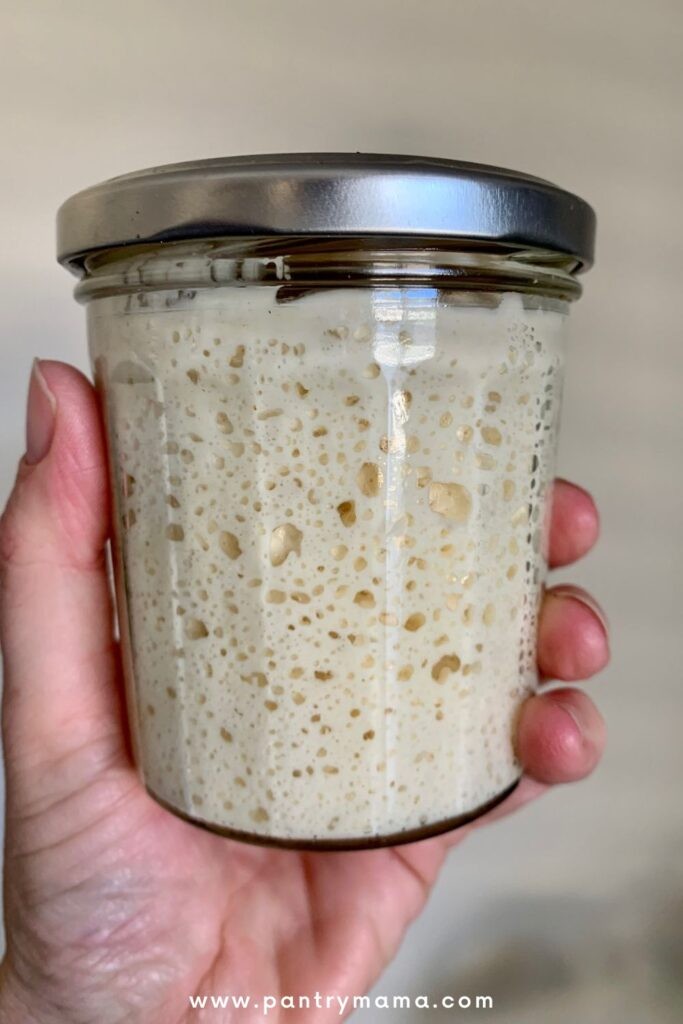 Image demonstrating a well-fed and active sourdough starter ready for baking
Image demonstrating a well-fed and active sourdough starter ready for baking
2.1.2. Step 2 – Autolyse
Weigh out your sourdough starter and water into a large ceramic or glass bowl.
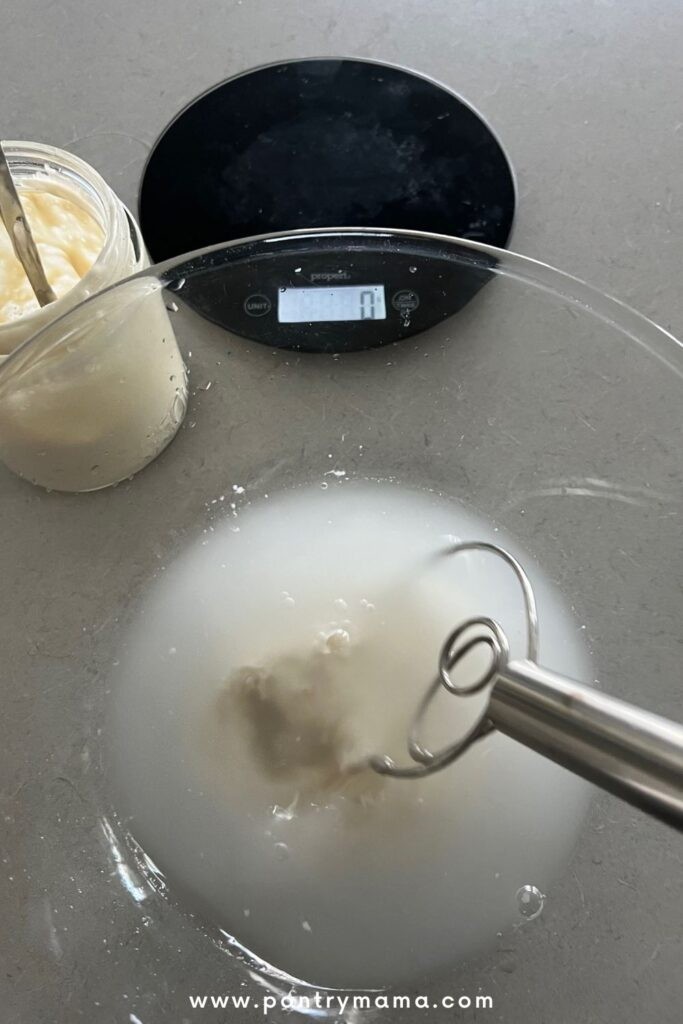 Image of sourdough starter and water being mixed in a glass bowl to begin the autolyse process
Image of sourdough starter and water being mixed in a glass bowl to begin the autolyse process
Mix the water and starter briefly. Add flour and salt and mix thoroughly to form a shaggy dough.
 Image of shaggy dough formed after mixing flour, water, sourdough starter, and salt
Image of shaggy dough formed after mixing flour, water, sourdough starter, and salt
Cover your bowl with cling film or a damp tea towel and let it sit for about 1 hour. This process, called “autolyse,” allows the flour to soak in the water and become fully hydrated.
2.1.3. Step 3 – Forming Up the Dough
After the autolyse, form the dough into a ball. Work around the bowl, grabbing the dough from the outside, stretching it up and over itself, into the center, until a smooth ball is formed. This should take about 20-30 stretches.
Once the dough has formed into a smooth ball, cover it again and let it rest for 30 minutes.
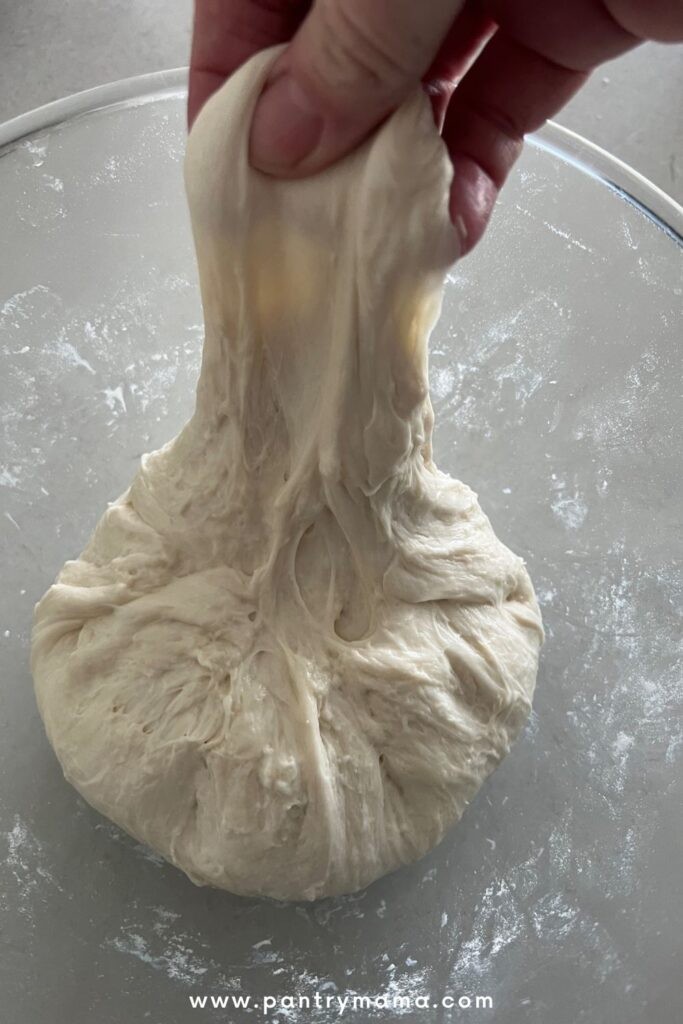 Image of fully hydrated dough formed into a smooth ball after the autolyse process
Image of fully hydrated dough formed into a smooth ball after the autolyse process
2.1.4. Step 4 – Stretch & Fold
Over the next few hours, create structure in your dough by performing 4-6 sets of stretches and folds. For each set, stretch the dough up and over itself four times, leaving about 15 minutes between each set.
2.1.5. Step 5 – Bulk Ferment (Dough Rise)
After the stretch and folds, cover the dough and let it rest and ferment. The dough should rise until it’s just under double in size. This dough, with a low percentage of sourdough starter, is suitable for an overnight fermentation.
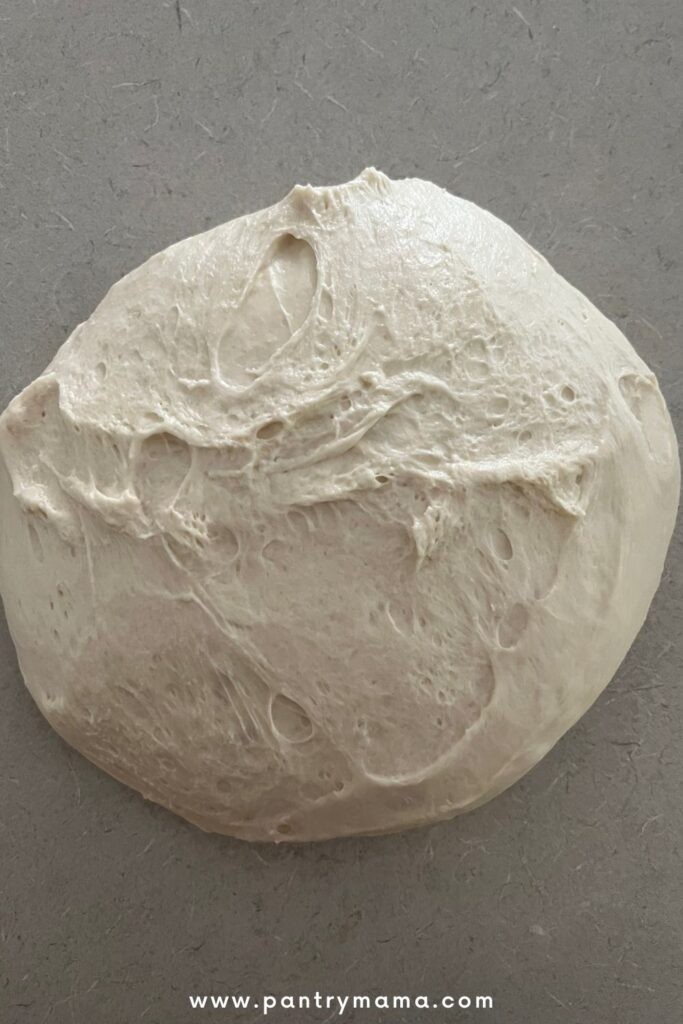 Image of dough undergoing bulk fermentation, nearly doubled in size after rising overnight
Image of dough undergoing bulk fermentation, nearly doubled in size after rising overnight
2.2. Day 2
2.2.1. Step 6 – Shaping
Shape the dough into either a boule or a batard. Flour your countertop with rice flour. Gently ease the dough out of the bowl using a silicone dough scraper. Pull the edges of the dough into the center and flip it over, gently pulling it into a tight ball.
2.2.2. Step 7 – Placing into a Banneton
Place the shaped dough into a banneton, smooth side down, so the seam is on top. This will give your dough the pretty lines from the banneton. If you don’t have a banneton, a bowl or basket lined with a floured tea towel will work. Liberally flour the banneton or cloth with rice flour to prevent sticking.
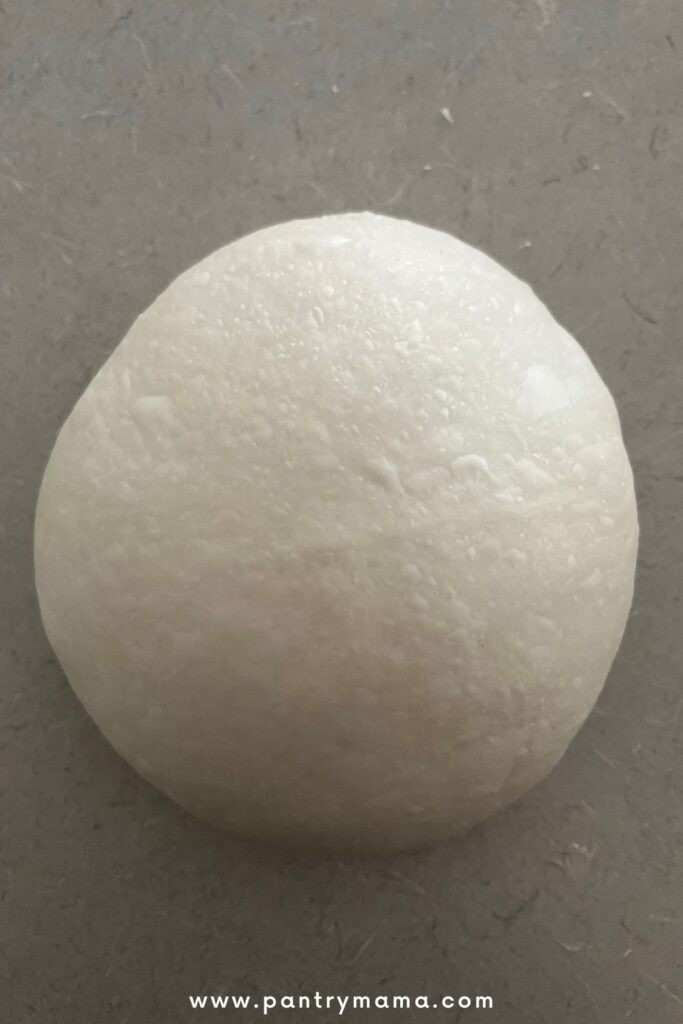 Image showing dough being placed into a banneton basket lined with rice flour for proofing
Image showing dough being placed into a banneton basket lined with rice flour for proofing
2.2.3. Step 8 – Cold Ferment (The Key to Long Fermentation)
Cover the dough loosely with a plastic bag or damp tea towel and place it in the fridge. Leave the shaped dough in the fridge for 24 to 48 hours. Ensure your fridge is set to the correct temperature (3°C or colder) for successful cold fermentation.
2.3. Day 3
2.3.1. Step 9 – Preparing to Bake
Preheat your oven to 230°C/450°F with your cast iron Dutch Oven inside to get hot. Preheat for about 1 hour to ensure the oven is super hot.
2.3.2. Step 10 – Bake Time
Gently place the sourdough onto a piece of parchment or baking paper. Score the bread with a lame, clean razor blade, or knife.
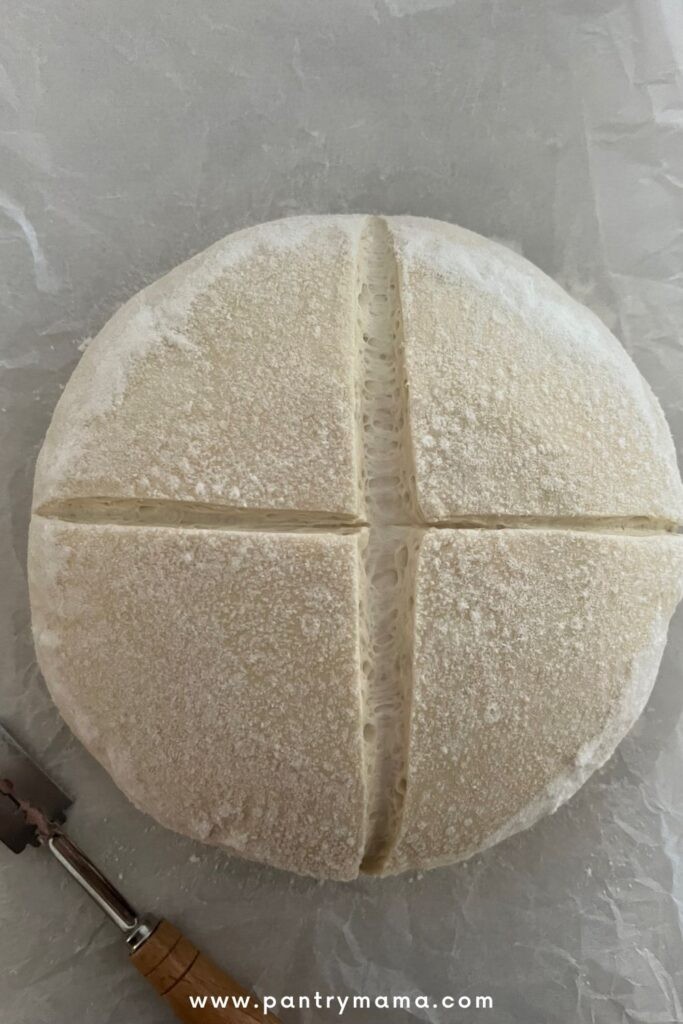 Image of scored sourdough bread on parchment paper, ready to be baked in a Dutch oven
Image of scored sourdough bread on parchment paper, ready to be baked in a Dutch oven
Carefully take your Dutch oven out of the oven and place the sourdough into the pot using the baking paper as a handle. Put the lid on and place it back into the hot oven.
Bake Time:
- 30 minutes with the lid on at 230°C/450°F
- 10-15 minutes with the lid off at 210°C/410°F
2.3.3. Step 11 – Finishing the Bake
Remove your dough from the oven and carefully remove it from the Dutch oven. Place it on a wire rack to cool.
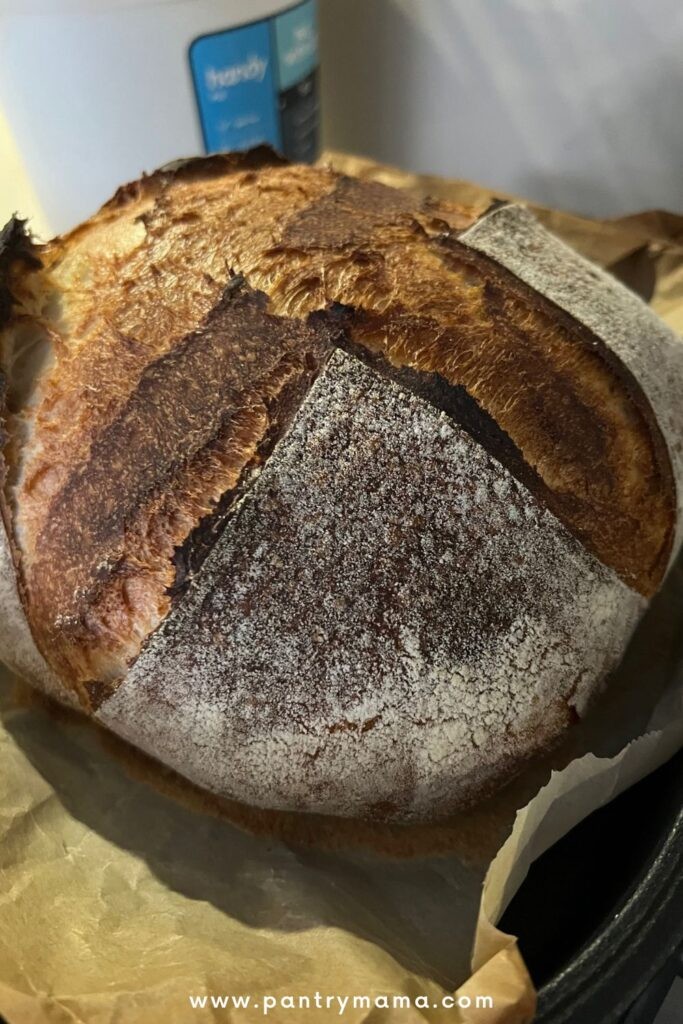 Image of freshly baked long-fermented sourdough bread cooling on a wire rack
Image of freshly baked long-fermented sourdough bread cooling on a wire rack
3. Why Is Temperature So Important in Long Fermented Sourdough Bread?
Temperature is crucial in long fermented sourdough bread because it dictates the length and success of both bulk fermentation and cold fermentation. The temperature of your kitchen influences the yeast activity during bulk fermentation, while the temperature of your fridge determines the effectiveness of cold fermentation. A fridge temperature of 3°C or lower is essential to prevent over-fermentation.
4. Baker’s Timeline for Longer Fermentation
Long fermentation offers flexibility to fit your schedule, with most of the time being hands-off. Here’s an example timeline:
Day 1 (Wednesday)
- 2 PM: Feed sourdough starter
- 7 PM: Autolyse
- 8 PM: Stretch and Fold
- 9 PM: Bulk Fermentation overnight (below 21°C)
Day 2 (Thursday)
- 6 AM: Shape the dough and place into the banneton, then into the fridge for cold fermentation.
Day 3 (Friday)
- Leave your sourdough in the fridge.
Day 4 (Saturday)
- 6 AM: Preheat the Oven
- 7 AM: Bake your sourdough bread
5. Can Sourdough Ferment Too Long?
Yes, sourdough can ferment too long. Over-fermentation during bulk fermentation can result in a soupy dough that is difficult to shape. Extended cold fermentation can break down the gluten structure, causing the loaf to collapse. Balancing flavor development with gluten structure is key to achieving great bread.
6. How Long Should You Ferment Sourdough Bread?
The ideal fermentation time depends on the strength and age of your sourdough starter, the amount used, and the ambient temperature. Typically, bulk fermentation takes 6 to 8 hours, while cold fermentation should not exceed 72 hours. Aim for up to 48 hours to prevent excessive gluten breakdown.
According to research from King Arthur Baking Company, in 2021, a well-managed fermentation process provides enhanced flavor and texture.
7. What Is The Recipe for Long Fermented Sourdough Bread?
This recipe combines incredible sourdough flavor with the health benefits of long-fermented foods, creating a delicious loaf with just a few ingredients and patience.
7.1. Ingredients
- 500g Bread Flour
- 350g Water
- 20g Sourdough Starter (increase if it’s cold)
- 10g Salt
7.2. Equipment
- Mixing Bowl
- Digital Scales
- Banneton
- Dutch Oven
7.3. Instructions
7.3.1. Autolyse – Premixing The Dough
Weigh out your sourdough starter and water into a large ceramic or glass bowl. Mix the water and starter together briefly. Then add your flour and salt and mix thoroughly to form a shaggy dough. Cover the bowl and let it sit for about 1 hour to allow the flour to hydrate.
7.3.2. Forming Up The Dough
After the autolyse, form the dough into a ball by stretching it up and over itself until smooth. Cover and let it rest for 30 minutes.
7.3.3. Stretch & Fold – Creating Structure
Perform 4-6 sets of stretches and folds over the next few hours, leaving 15 minutes between each set.
7.3.4. Bulk Ferment
Place the dough in a plastic cover to rest and ferment until it’s just under double in size.
7.3.5. Shaping The Dough
Shape the dough into a boule or batard on a floured countertop with rice flour.
7.3.6. Placing Into A Banneton
Place the dough into a banneton, smooth side down.
7.3.7. Cold Ferment
Cover the dough and place it in the fridge for 24 to 48 hours.
7.3.8. Preparing To Bake
Preheat your oven to 230°C/450°F with your Dutch oven inside.
7.3.9. Bake Time
Gently place the sourdough onto baking paper and score it. Carefully place it into the preheated Dutch oven. Bake for 30 minutes with the lid on, then 10-15 minutes with the lid off at 210°C/410°F.
7.3.10. Finishing The Bake
Remove the dough from the oven and Dutch oven, and place it on a wire rack to cool.
7.4. Notes on Baking:
- Place a baking sheet on the shelf underneath your Dutch oven to prevent burning.
- If concerned about the bread not being cooked through, turn off the oven and let the bread rest on the oven rack with the door ajar for a few hours.
- Let the loaf cool for at least a few hours before cutting into it.
8. Frequently Asked Questions
8.1. Should I Add Olive Oil to My Dough?
Adding 20g of olive oil to your dough is optional. A mature sourdough starter and accurate fermentation should yield a light, crispy crust.
8.2. How Do Sourdough Yeast Survive in Acidic Conditions?
Sourdough yeast survives in acidic conditions due to its resistance to the acids produced by lactic acid bacteria. This symbiotic relationship allows them to thrive.
8.3. Is Long Fermented Sourdough Bread Gluten-Free?
No, sourdough bread made with wheat flour contains gluten, even after long fermentation. It may be tolerated by those sensitive to gluten but is unsuitable for celiacs unless made with gluten-free flour.
9. Ready To Experience Vietnam?
Planning a trip to Vietnam? Let SIXT.VN take care of your travel needs. We offer a range of services to ensure a smooth and enjoyable experience:
- Travel Advisory Services: Get expert advice on the best time to visit, must-see attractions, and cultural insights.
- Airport Transfers: Enjoy hassle-free transportation from the airport to your hotel.
- Hotel Bookings: Choose from a variety of accommodations to suit your budget and preferences.
- Sightseeing Bookings: Explore Vietnam’s iconic landmarks with our curated tours.
- Flight Bookings: Find the best deals on flights to and within Vietnam.
- Hanoi Tours: Discover the charm of Hanoi with our expertly guided tours.
Contact us today to start planning your unforgettable journey with SIXT.VN!
Address: 260 Cau Giay, Hanoi, Vietnam
Hotline/WhatsApp: +84 986 244 358
Website: SIXT.VN
10. Call To Action
Ready to explore Vietnam with ease? Visit SIXT.VN for all your travel needs!



